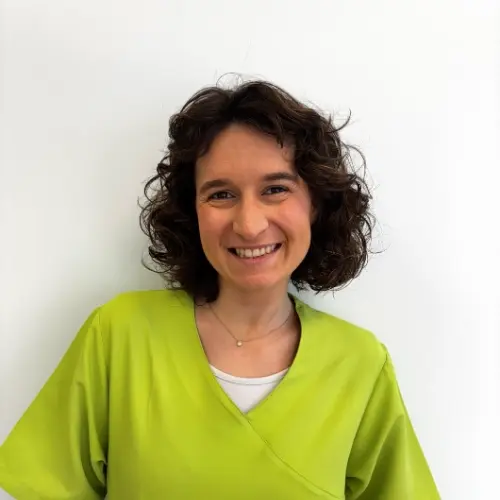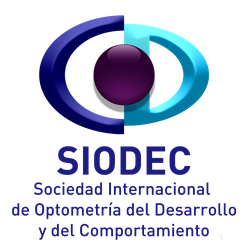
Blanca Olmedo, an optometrist and speaker at the IX SIODERV Congress, discusses in this interview the importance of personalizing each optometric intervention based on the pace and needs of the patient, especially in populations with special needs. From empathetic communication to the precise adaptation of the level of demand, her approach aims not only to improve visual performance but also to facilitate a more effective and humane therapeutic experience that is shorter in duration.
Why is it important in visual therapy to understand the unique challenges faced by patients with special needs?
When we perform a visual therapy intervention, we must always keep in mind that we are not just working with the eyes. We are working with a brain that needs us to provide guidance to reach its maximum potential. This applies to all our patients. For those with special needs, it is our duty to understand those needs in depth so that we can adapt to them throughout the therapy.
It will be very different in terms of communication approach, time management, and the difficulty of the initial procedures when we work with patients who have a slower information processing or with those who have a faster processing.
If we do not know how to adapt to the rhythms of a patient from a special population, it is like trying to prune a tree with a knife. We might succeed, but it will be a much harder job for us and take longer for the tree.
"If we do not know how to adapt to the rhythms of a patient from a special population, it is like trying to prune a tree with a knife."
Will you address the techniques you use to improve communication and ensure effective training methods that are suitable for the needs of each patient in your presentation?
Yes. One of the parts that I consider most important when it comes to successfully handling a case is achieving good communication with the patient. This not only requires that we know how to speak and adapt our language if necessary, but we must also know how to listen and read the person in front of us in order to create our own language.
Perhaps one of the greatest difficulties in communication can be this: being able to put ourselves in the shoes of the person in front of us and knowing whether our way of communicating is effective or if we need to change it.
In patients from special populations, communication will be a key tool to advance therapy.
How has adapting to the needs of these patients affected the quality of your optometric practice?
Since my first patient with special needs, I have drastically improved the way I approach these cases. My communication has improved, and this has translated into a better optometrist-patient and optometrist-family relationship. This has allowed families to communicate their needs to me more effectively and for patients to have effective communication with me in their own language.
By never forcing and learning to adapt to the rhythms of each patient, I have achieved shorter and more efficient therapies. Knowing what my patients needed and finding the tools to motivate them in each specific case has improved their adherence to treatment, and in addition to coming in happy and eager for visual therapy, they maintained a good work pace at home.
I feel that with every patient I have had throughout my career, I have learned something, regardless of whether they had special needs or not. All the lessons have added up to make me the optometrist I am today, and I hope to continue evolving over the years.
How is the high level of demand related to the effectiveness of visual therapy in patients?
When we conduct a visual therapy treatment, one of the ultimate goals is always the automation and consolidation of the learning that has taken place. By seeking an appropriate level of demand for each patient, we will promote the automation of these processes and ensure that all the visual skills that have been worked on are established in the long term.
What are the common challenges when trying to automate visual skills, and how do you propose to overcome them in this workshop?
It is common for us to find ourselves at a point in therapy where, to complicate the exercises, we resort to the two tools we always use, which are more readily available or more comfortable for us. This does not always guarantee a high level of performance in the patient, as there will be cases where the metronome places them at an extremely high level of demand and cases where they can perform an exercise with the metronome without any difficulty.
In the workshop, we propose to practically experiment with different ways to increase or decrease the level of demand for each patient. We will organize these levels of demand according to the skill with which we want to promote integration, providing ideas for vestibular, peripheral, or cognitive demands, among others.
The goal is for those who attend the workshop to take away ideas that they can apply the next day with their patients and to foster a more open mindset on how to ensure these automation processes.
What role does treatment personalization play in this case? Is it important to achieve a certain level of demand?
To moderate the level of demand with a patient, personalizing the treatment and each individual exercise is key. Each patient needs specific stimulation to be able to perform at a high level, and depending on the procedure being carried out, peripheral or cognitive demands may interfere more.
It may be that for the same patient we need vestibular demands to automate oculomotor function but cognitive demands to automate convergence and divergence. Each patient is shaped by their own pattern, and it is up to us to know how to read it and adapt.
